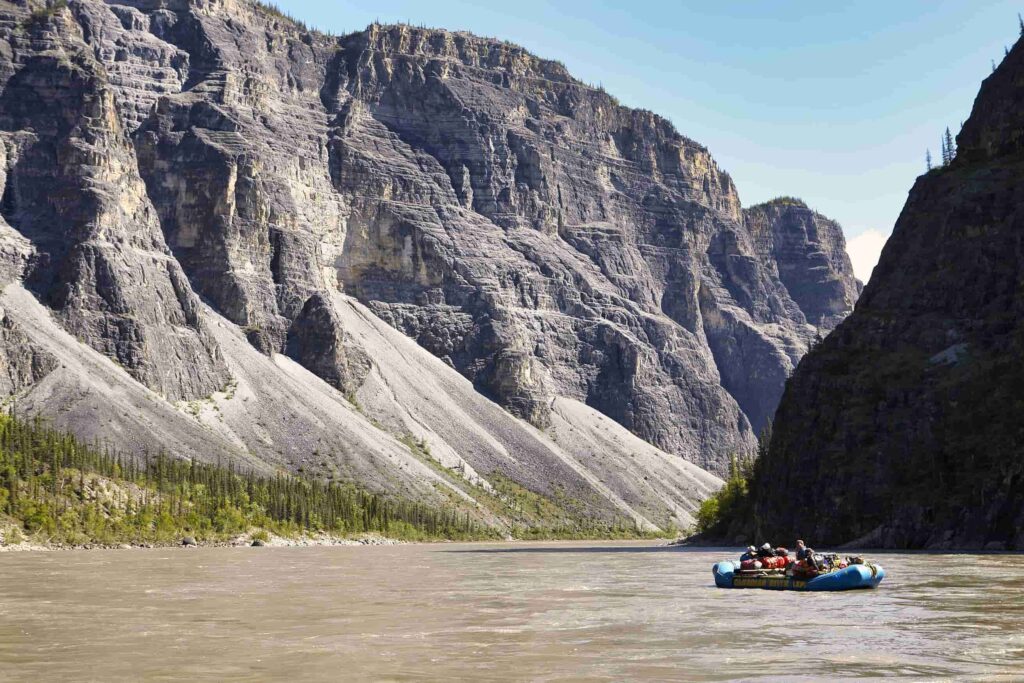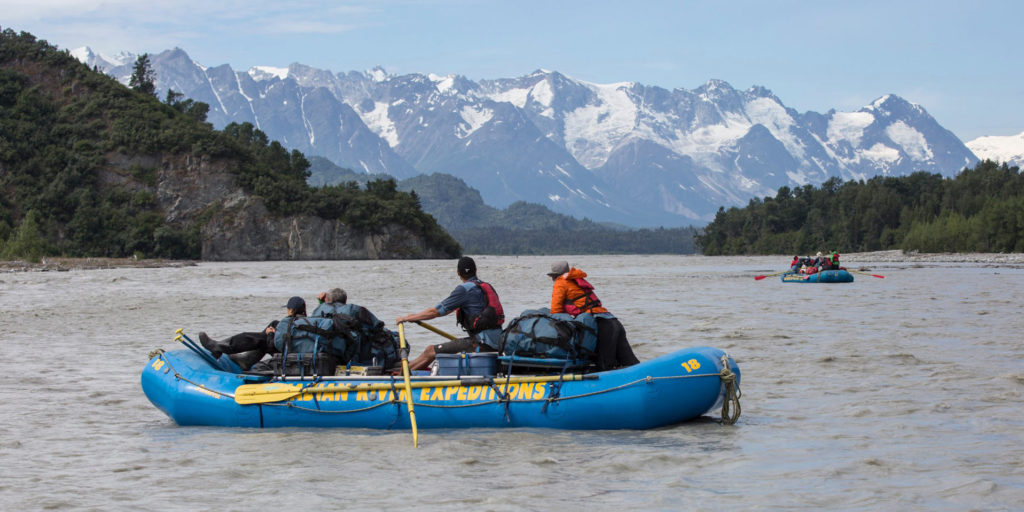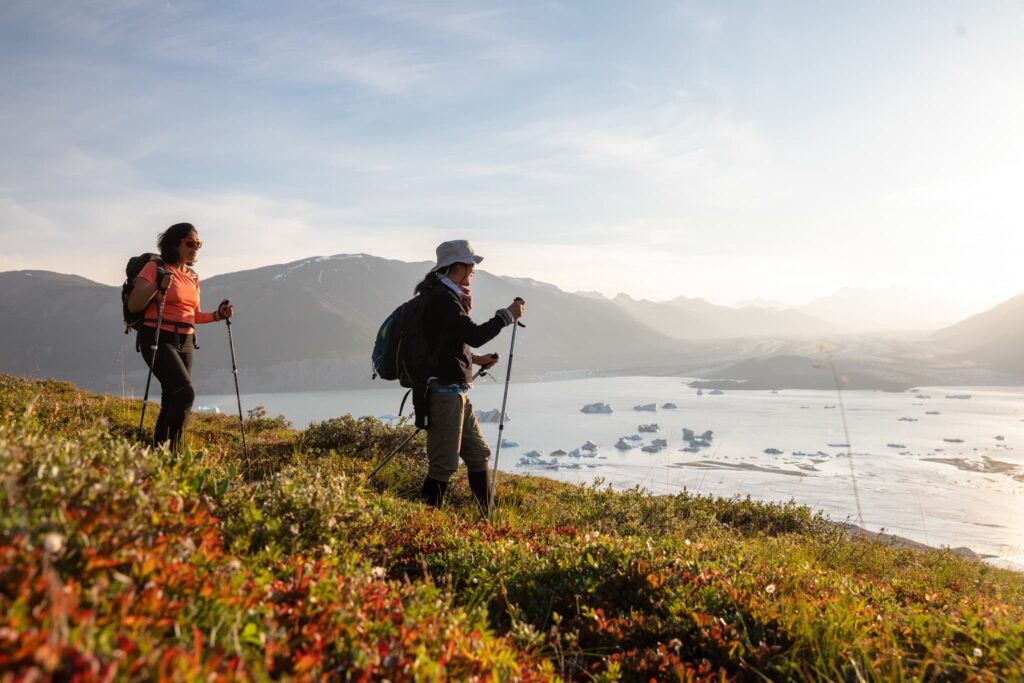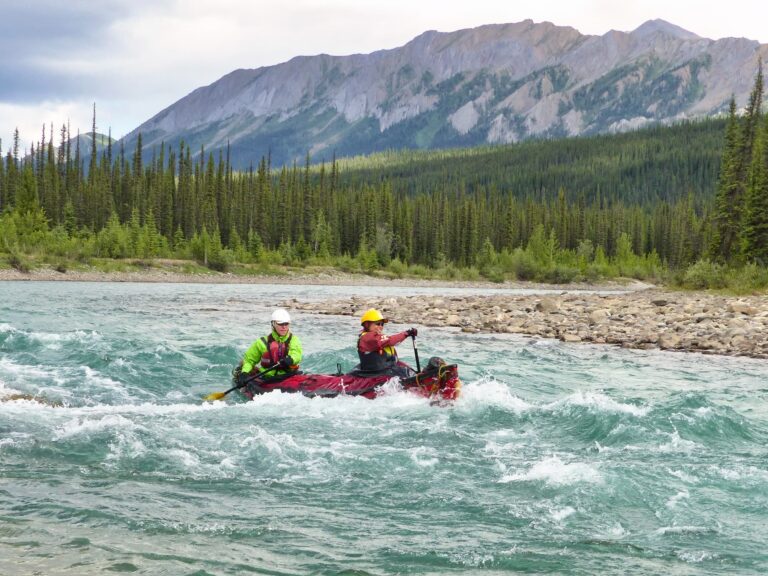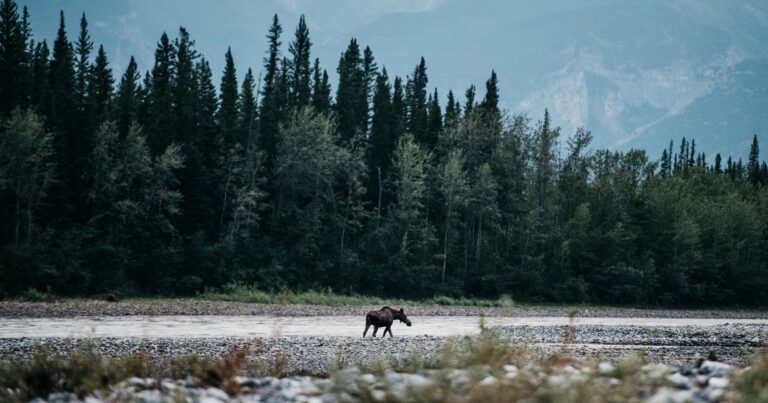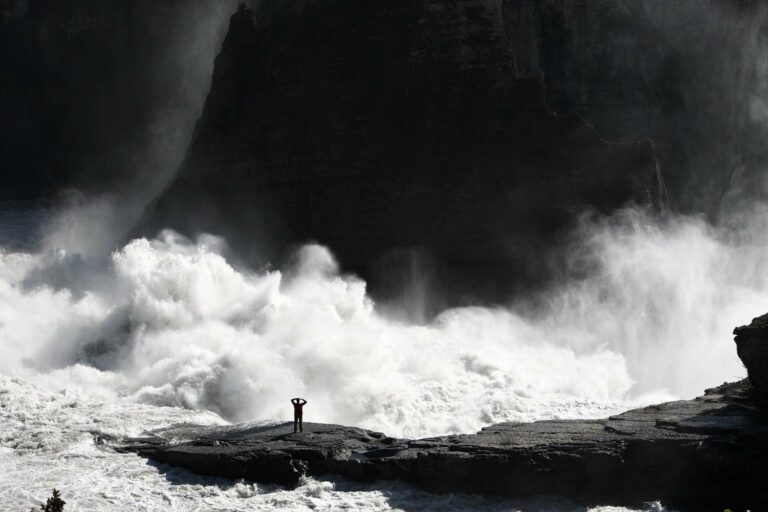This article was written by Neil Hartling and originally published in the fall 2004 issue of our Northern Currents newsletter.
The notion that life imitates art seems to prove out in my experience. I’m not referring to the fact that I often feel like I’m living in an exotic commercial. It is the poetic art of Robert Frost who’s famous lines “Two roads diverged in a wood, and I – I took the one less traveled by, and that has made all the difference.” resonate in my life.
As a youth I enjoyed outdoor pursuits and would read every outdoor publication that I could lay my hands on. When I was 15, I read Dick Turners book “Nahanni”. Each page was rich with the details of his enviably adventurous life in a dramatic and larger than life land with a beautiful name. I hung on every word as Turner recounted tales of Canada’s deepest river canyons, Virginia Falls, the exceptional geological features, the hotsprings, the wildlife and the macabre events. I dreamed that I might see these things for myself one day. While the dreams of outdoor adventure fueled the imagination of my youth (especially during school classes), I would not have dared to dream that one day I would guide expeditions across “the top of the world” or that my territory would span 1/3 of the continent, many times bigger than even Texas (which seems to be the standard of “big size measurement”). Even if this had entered my wildest dreams, it is certain that I would not have imagined that one day I would outfit on the famous Nahanni River or read the words “best seller” on the cover of a book I had written about these adventures. Perhaps most importantly I would not have imagined the impressive group of fellow guides who would return season after season to lead the best river expeditions stretching from Alaska to Nunavut, nurturing the dreams of our guests who would return year after year for yet another adventure in the most exotic regions of the planet. In those youthful years I had not yet learned of the joy and satisfaction of sharing wild places with others and this was to become the “icing on the cake”. And most of all, I would not have imagined that it would all hinge on a future rescue.
Looking back, it was a modest beginning. Over 20 years ago, like so many other young outdoor enthusiasts I graduated with a degree specializing in Outdoor Education and was not surprised to find that no one awaited with the perfect job on a “silver platter”.
Although I didn’t know it at the time, this was likely one of my luckiest breaks. I realized that if I wanted to fulfill my dreams I would have to start my own company. Beginning with a small outdoor skills school operated from my parent’s garage (they are candidates for Saint Hood), I cut my teeth in the outdoor world. In those days I focused on teaching outdoor courses – canoeing, Cross-Country skiing, backpacking and first aid. In the shoulder season I even taught moccasin and mitt making. My needs were simple and as long as I had money to buy new socks and gas for my vehicle I was content. I turned my dad’s garage into a canoe factory and managed to destroy their lawn with the many canoes and kayaks that emerged from late night building forays with my paddling friends.
In those early days, eco tourism was not part of the lexicon. It was a serendipitous series of events that found me living out one of my dreams of a trip on the fabled Nahanni River. It was love at first site. But the commitment began in Deadmen Valley.
It was below Second Canyon, in Deadmen Valley where first I ran into Father Peter Mary, OMI. A humble man, he was the stuff of legends. He had been in the Nahanni region since 1955 and had come with the desire to serve humanity born of his experiences in the French Underground during the Second World War.
For many years, Father Mary depended on riverboats and dog teams to visit his parishioners, who lived out on the trap lines and in the small settlements. He was fluent in Dene and, although the facial injuries he incurred many years ago tormented him in the winter, he was undaunted in serving his people.
Our meeting was accidental. Father Mary, a respected expert on the ways of the South Nahanni River, was leading a group of Royal Canadian Mounted Police on a patrol up the river. I was traveling with a group of friends on my first trip down the river – an experience I was beginning to understand, that would shape my life for years to come.
Our two groups happened to make camp at the valley in close proximity to each other. One thing led to another and we ended up sharing a campfire. That night, over the flames and crackle of burning driftwood, I queried Father Mary on his feelings about the Nahanni and his life on the land. He looked me directly in the eye, the glint of firelight revealing the sincerity in his gaze.” It’s not the beauty alone,” he said, his accent a mix of Parisian French and Dene, “it’s what happens to the heart and soul.”
His words were simple, but something clicked. I harkened back to my teenage dreams of the grand river. And now it had come to pass. With its exhilarating rapids and canyons, its myth and romance, the Nahanni had worked its magic on me. It had seeped into my veins.
That night I couldn’t sleep. After the stories were finished and I was alone by the fire, a strong and warm Chinook wind began to blow in from the west. The twilit sky showed the tell-tale lenticular cloud, the Chinook arch, giving the illusion of a dome over the mountains to the west. Surveying the beauty of Deadmen Valley from our camp, I reflected on Nahanni pioneer R.M. Patterson’s long-ago words about his own nearby camp. “We were kings, lords of all we surveyed.” The wheels rolled in my mind and visions of possibilities filled my head.
I left my chance meeting with Father Mary knowing that my future lay in this place. I just wasn’t sure how. While floating through the majestic depths of First Canyon and navigating the braided channels of The Splits as we neared the end of the journey, I contemplated the possibilities of becoming an outfitter and guide here in the Nahanni. Unfortunately, the hurdles would be many, not the least of which would be the politics of licensing. But youth was on my side. Unattached and without dependents, I was free to chase a dream not born of business sense, but of romance.
And the river – where you must expect the unexpected – would soon toss up a very special surprise.
When I left Nahanni after my first trip, I vowed to return – soon. The wardens had told me that only one canoe outfitter was allowed to operate on the river and that license was already taken. That policy may as well have been carved in granite. I was already running a canoe outfitting business in the Alberta Rockies, but I couldn’t sit easy with the knowledge that a monopoly existed for canoe outfitting on the Nahanni. I was determined to acquire an outfitting license.
I didn’t realize it at the time, but the Government of the Northwest Territories was besieged by hundreds of requests for outfitting licenses every year and had become adept at turning them away. I began with inquiries to obvious departments and was given the run around a number of times. Eventually, I was given the prescribed set of hoops through which to jump. I soon realized they were designed to be almost impossible. Fortunately my youthful, naïve, stubbornness prevailed.
Besides the bureaucratic prerequisites, I had to obtain the permission of the people in the village of Nahanni Butte. With a population of 80, this community was understandably not responsive to outsiders with proposals. My letters to the chief went unanswered. The bureaucrats would have stumped me if It hadn’t been for a trump card that was about to fall into my hand.
I was smitten with the Nahanni and returned for the second time in September of that year with a group of friends. It was early on a frosty fall morning at Blackstone Landing where our trip would finish. I had volunteered to run the van shuttle prior to the trip and was awaiting the other driver. While answering nature’s call in the bush, I heard screams for help from out on the Liard River. Sprinting to the bank, I saw an aluminum boat floating helplessly with the current in the middle of the voluminous flow. Aboard were a man, a woman, and a little girl. The man was the new teacher in Nahanni Butte. He had been bringing his family and winter supplies to his new posting. They were waving frantically and their motor appeared inoperative. I couldn’t see paddles or oars in the boat. They looked in rough shape and it was clear they were frightened of the Beaver Dam rapids that lay downstream. They were clearly in trouble.
I quickly searched the campsite where I planned to leave the van and found the only occupants – a couple camped in a tent. I woke them in a hurry. The husband followed me and we grabbed a canoe and paddled out to the boat. Tying our painter to their boat, we began the laborious task of paddling them towards shore. The process seemed to take forever.
Finally and fortunately, dripping with sweat, we landed two kilometers downstream and within striking distance of the homestead of Edwin and Sue Lindberg. The family had run out of gas the day before on their way to their home in Nahanni Butte, about 25 kilometers upriver, and they had drifted through the chilling night. They were all hypothermic, especially the man, who had jumped out of the boat in a vain attempt to ground it on a sand bar. They had known that we were their only hope for rescue.
Sue Lindberg soon had the family secure and recovering in her cozy log home. My fellow rescuer and I were treated to a welcome feed of pancakes before returning to our respective endeavours. As I was leaving the cabin, the father shook my hand and said, “I owe you big time, if I can do anything for you, let me know”. “Thanks” I replied, but my mind was already on my upcoming Nahanni adventure and I doubted we would ever cross paths again.
At Christmas I phoned Father Mary to wish him the best of the season. I asked about the family I had helped save. He told me they were fine. Just then it dawned on me that they could be my much needed emissaries in Nahanni Butte. A radio-telephone call to the community on a winter’s night set the stage. My friend told me that if I came to Nahanni Butte, he would be my ambassador. No promises, but he would do what he could to help.
Whatever he did, it worked. My friend from the river introduced me to various members of the community. They agreed to provide the vital endorsement to my application provided I made sure there was benefit to the community when possible.
That day was historic for us all. Since then I have formed a partnership with the Nahanni Butte Band, assisting them to enter the business of tourism. On another occasion, one of our guides, Les Parsons, managed a dangerous night rescue on the river, saving the life of a father and son from the community.
The wave of eco/adventure that now sweeps the world was yet to come. I teamed up with other keen young guides and we pursued our dreams. If we had a strength that set us apart it was that we were anxious for feedback from our guests and used this helpful information to fine tune our offerings. This resulted in immediate and lasting success. As the phenomena of eco/adventure tourism began to sweep the world we were once again in the right place at the right time. As the seasons passed we were thrilled as we shared with our guests this majestic land that never ceased to please and amaze.
The next cue for action was the often repeated phrase at the end of a trip:” that was fantastic, where do we go next?” I knew that there was a diverse array of spectacular northern rivers and so we set out to add to our list a new destination each year. Our strategy was to select new rivers with “world class features” and grow slowly so we could continue to “do it right”, maintaining high standards. To this day we try to operate with the spirit of a family business (the office is in my house).
Moving to the Yukon was a life style choice for Judy and me (and my young apprentice: Lars – now 12). We love the mountainous surroundings and the many adventures that wait at our door. The additional benefit of living in the north is that it allows me to be close to the areas in which we operate and the local people who know the land so well. We have our ear to the “moccasin telegraph” and this allows us to provide the best service possible and include local and cultural insight into our programs.
It’s been 22 years since my first trip down the Nahanni and I’ve come to know that the river leaves an indelible mark on all those who taste her waters. I’ve kept in touch with most of the people I’ve hosted through my outfitting career and they consistently claim that Nahanni occupies a particularly fond spot in their life’s memories. It is a touchstone, something reminiscent of a time and place when their spirit’s soared most freely. I’ve had the good fortune to be part of this.
I can happily report that I, too, have found gold in the Nahanni. Not the shiny metallic sort, but the kind that lets me review, without regret, two decades spent sharing the valleys and canyons of this enchanted land with my fellow river travelers. These years have been rich. My only regret is that I am unable to take part in all of the trips offered by my company.
For me, Raymond Patterson probably said it best in The Dangerous River. “We had been allowed to live for a little time in a world apart, a lonely world of surpassing beauty, that has given us all things from somber magnificence of the canyons to the gay sunshine of those windswept uplands; from the quiet of the dry side canyons to the uproar of the broken waters – a land where men pass and the silence falls back into place behind them”.


